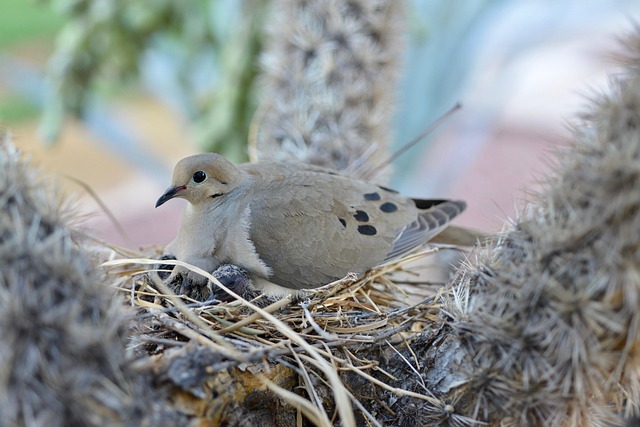Commercial bird nest control is a specialized service managing bird nesting in urban areas, focusing on structures like buildings and power lines. It involves identifying nests, assessing risks, and implementing strategic solutions, including non-lethal methods, to balance bird population management with safety and environmental protection. Seasonal strategies are key; spring/summer uses deterrents and regular inspections, while autumn/winter focuses on maintenance and monitoring. Professionals employ techniques like physical barriers and eco-friendly repellents, maintaining year-round protection for birds while adhering to global regulations.
In many regions, commercial bird nest control is a year-round necessity, especially as urban expansion encroaches on wildlife habitats. Effective management requires a strategic approach tailored to each season. This article provides an in-depth guide to seasonal bird nest management plans, offering essential insights into commercial bird nest control. From understanding the basics of commercial bird nest control to implementing prevention techniques and navigating regulatory compliance, these strategies ensure sustainable practices for a balanced ecosystem.
Understanding Commercial Bird Nest Control: A Overview
Commercial bird nest control is a specialized service designed to manage and mitigate bird nesting activities in urban and industrial settings. It involves understanding the unique challenges posed by various bird species and their nesting habits, especially in commercial areas like buildings, bridges, and power lines. These structures often provide ideal nesting sites due to their elevation, protection, and proximity to food sources.
Effective commercial bird nest control requires a strategic approach that includes identifying nesting sites, assessing potential risks, and implementing tailored solutions. This may involve the use of non-lethal methods such as scaring techniques, visual deterrents, or modifying structures to make them less attractive for nesting. It’s a delicate balance between managing bird populations and ensuring human safety, environmental protection, and compliance with local regulations.
Seasonal Strategies for Effective Nest Management
In the realm of commercial bird nest control, understanding and implementing seasonal strategies are key to effective nest management. During spring and summer, active nests require a delicate balance between protecting buildings and structures from damage while ensuring the safety and well-being of nesting birds. This often involves non-lethal methods such as deterrents, physical removal of nests after fledging, and regular inspections to prevent unwanted occupation.
As seasons transition, especially in autumn and winter, dormant bird nests still pose challenges. While some species may abandon their nests, others, like pigeons, can remain year-round. In these periods, management plans should shift towards maintenance and monitoring. Regular cleaning of nest sites reduces health risks associated with accumulated nesting materials. Additionally, strategic sealing and repelling techniques help discourage birds from reclaiming the same areas, ensuring a more peaceful co-existence between humans and avian inhabitants.
Protecting Year-Round: Prevention and Mitigation Techniques
Protecting birds and their nests year-round is essential for maintaining ecological balance and ensuring the well-being of various avian species, especially in urban areas where human activities can significantly impact wildlife habitats. Commercial bird nest control plays a crucial role in implementing effective management plans that prevent unwanted nesting while promoting safe and harmonious coexistence between humans and birds.
Prevention and mitigation techniques are key strategies employed by professionals in commercial bird nest control. This involves identifying potential nesting sites, especially on buildings and structures, and taking proactive measures to deter birds from settling. Methods may include installing physical barriers, such as spikes or netting, which physically prevent birds from accessing ledges or nooks suitable for nesting. Additionally, using bird repellents that emit sounds or have visual effects can effectively discourage birds from frequenting problem areas. Regular maintenance checks and prompt response to any nesting activities are vital to ensuring the success of these measures, thereby creating a safer environment for both birds and humans throughout the year.
Regulatory Compliance and Sustainable Practices in Bird Nest Management
In the realm of commercial bird nest control, regulatory compliance is paramount. Authorities worldwide have implemented stringent laws to protect birds and their nests, especially during breeding seasons. These regulations mandate specific practices for bird control professionals to ensure minimal harm to avian life. Sustainable practices are at the core of effective and responsible bird nest management. It involves employing eco-friendly methods like habitat modification, deterrents, and manual removal, all while adhering to set guidelines. By prioritizing these sustainable approaches, commercial bird nest control services can offer year-round protection without compromising ecological balance.
Implementing a comprehensive seasonal bird nest management plan is essential for businesses aiming to protect their properties year-round. By combining strategic seasonal approaches, prevention techniques, and sustainable practices, it’s possible to achieve effective bird nest control while maintaining regulatory compliance. Adopting these methods can minimize disruptions caused by birds, ensuring a safe and aesthetically pleasing environment for all. When approached thoughtfully, commercial bird nest control can be both efficient and environmentally conscious.
